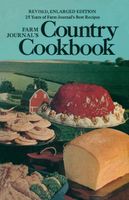Advertisement
Homemade Cottage Cheese
Appears in
Published 1972
- Pasteurize 2 gallons of skim milk. Cool the milk to about 75° F. in can under running water. (Without a pasteurizer, heat milk to 165° F. for 30 minutes; then cool to 75°.)
- Transfer milk to enameled pan with cover to heat curd. Add 1 c. starter. For homemade starter, sour small amount fresh (unpasteurized) skim milk by holding at room temperature 12 to 24 hours. If cheese is made regularly, save 1 c. clabbered milk before heating curd. Keep covered in cool place.
- For commercial starter, buy lactic acid culture from dairy or commercial culture laboratory. Add this to pasteurized skim milk which has been cooled to 75°. As the homemade starter has the organisms necessary for clabbering, the use of lactic acid culture is optional if you have raw milk; however it is a must with pasteurized milk and you get more uniform results.
- After milk with starter has stood overnight at room temperature (70° to 75°), a firm clabber forms and a little whey appears on the surface. If it stands too long, cheese may be rubbery and strong. In cooler weather, it may take 12 to 18 hours for milk to clabber.
- Cut curd into squares by passing a long knife or spatula through it lengthwise and crosswise of the container. Don’t change pans to cook curd—breaks it up too much!
- Set pan of clabbered milk in a larger pan containing hot water-double boiler style. Heat slowly to separate whey and make small, firm curds. Stir gently for even heating and avoid matting. Avoid breaking curd in unnecessarily small pieces.
- Carefully check temperature with thermometer as it nears 100° F. Test curd by gently rubbing between fingers—should feel slightly granular. (For firmer curd, heat to 110°. Family approval will tell you when to stop.) For a rather soft curd, heat to 100° F., then keep it at that temperature until curd feels grainy. Avoid overheating!
- Pour mixture immediately into colander lined with cheesecloth. Drain 1 to 2 minutes. Shift curd on cloth by gently lifting one corner.
- Rinse curd thoroughly with cold water to wash out all whey. (Dip cheesecloth with curd in ice water to cool faster.)
- Remove curd from cloth; add 2 tsp. salt (1 tsp. for each pound of curd). Blend. Store, tightly covered, in cold place.
- At serving time, fold in cream —amount depends on personal preferences. A gallon of milk makes about 1 quart cottage cheese.


